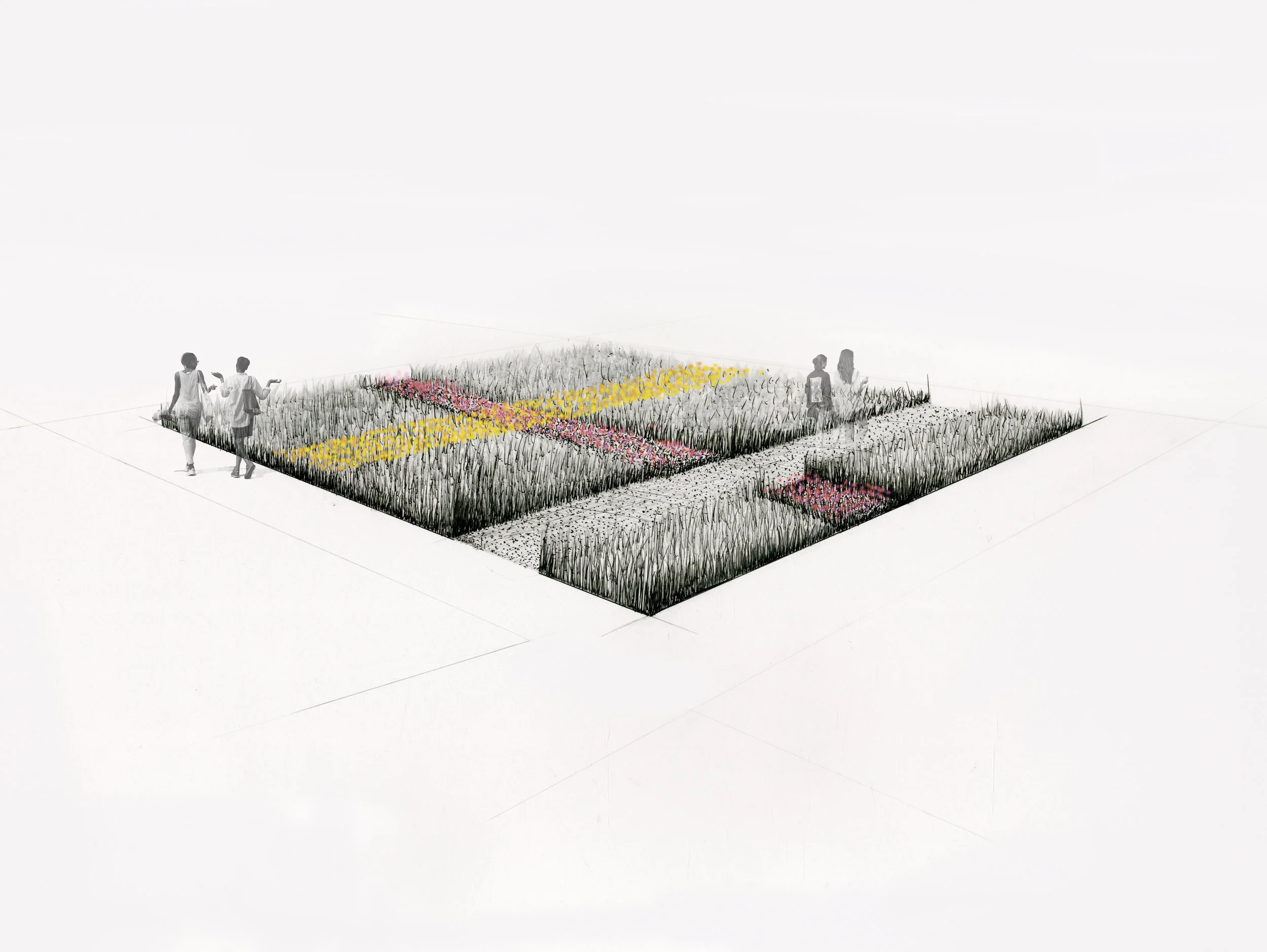The American Lawn:
Traces OF THE Urban Wild
Across the United States, the lawn is a ubiquitous landscape element. Highly manicured lawn is found everywhere from suburban homes, to college and university campuses, and public monuments and institutions. Sprayed with pesticides and weed killers, and cut on a weekly schedule, lawns appear like green carpets, devoid of "alien" plant material.
Harvard University holds to this code of landscape maintenance, using comprehensive management practices which include soil health testing, pest and disease control, compost distribution, and irrigation. Across the University campus, these rituals of maintenance often go unseen. Through this intervention, I play with this symbol of the lawn, and through a selective process of cutting, I trace and highlight these processes of maintenance. Through cutting and then tracing these lines with plants of a different color, this project seeks to make visible the maintenance of the landscape, as well as the temporality of the landscape, and the shifting spatial quality that plant material provides us. The cutting of a line in grass can have great spatial implications for us, and can bring an awareness to the materials that shape our outdoor spaces.
I propose the planting of a rectangular lawn in Wallach Garden. The square lawn is centered in the garden, surrounded by a crushed stone pathway that allows visitors to walk around the lawn. Initially the lawn (sod) is rolled out, and allowed to grow tall. Throughout the summer season, lines are cut periodically in the grass. Visitors are able to walk these lines. As the lines grow back, wildflowers (ones which are often considered weeds and removed) are planted, so as to trace the lines once cut. Four lines would be cut throughout the course of the summer months; one in May, June, July, and August. In late summer, the grass would be cut, and allowed to grow back throughout the fall as a mixture, of grass and flowering weed plants. The lawn would be left to grow tall over the fall months, and left to yellow and dry over the winter months. In the spring, the plant material would be cut, and the process would start over. New lines would be introduced, until finally the lawn was taken over by a colorful mixture of wildflowers (weeds).
Competition Entry: Radcliffe Yard






